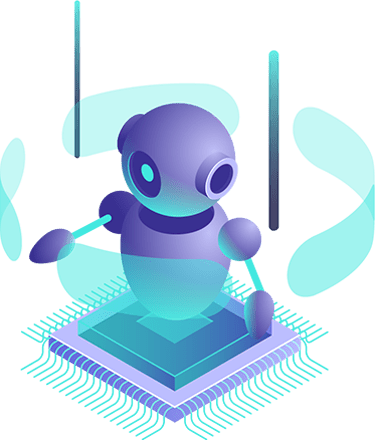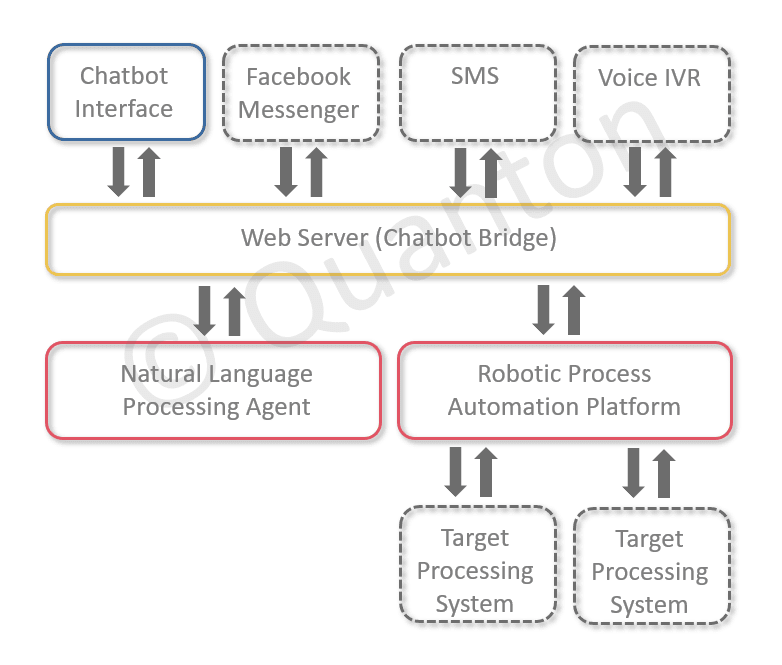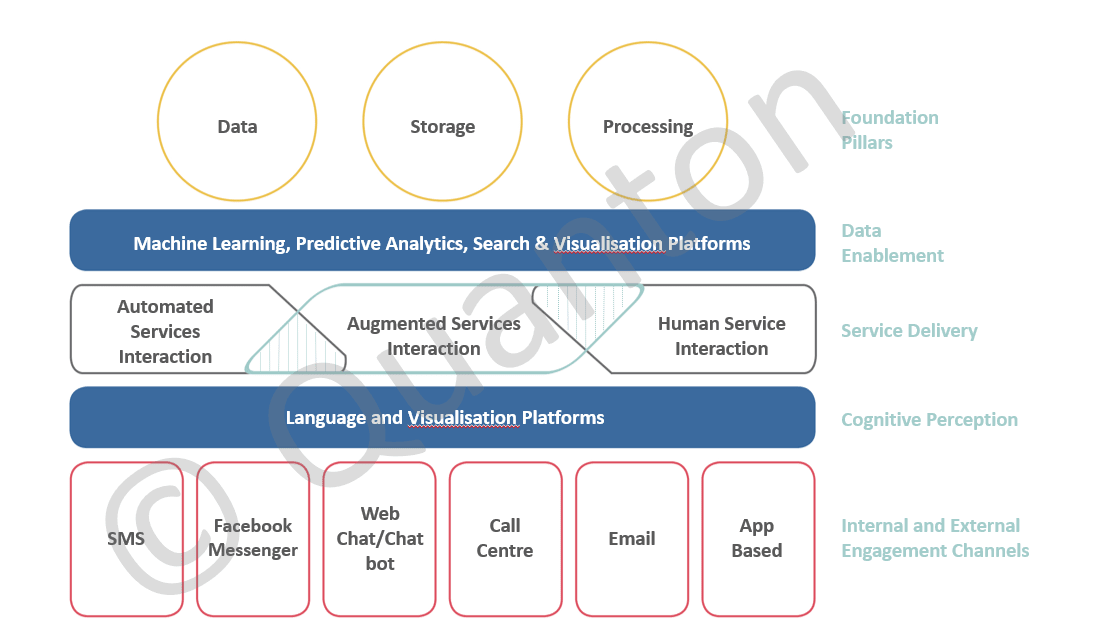Based on the combination of Natural Language Processing (NLP) (including intent analysis and response), a chatbot interface and
Robotic Process Automation (RPA) Quanton built a proof of concept for a conversational ai platform capability of interacting with users through voice or text, interpreting a request and completing tasks.
Underpinned by Google cloud services and Blue Prism the proof of concept is channel agnostic which means that it could be integrated with voice channels like a call center interactive voice response (IVR) or text channels like a chatbot, website messenger, Facebook Messenger or Slack.
The conversational platform was used to determine the intent of the customer and collect the required information like what items were wanted and in what quantity before calling Blue Prism, a Robotic Process Automation (RPA) platform, to initiate the process and serve the required data. The RPA solution then executes the task by accessing target systems, in this case a website, and provided an outcome response back to the customer.




